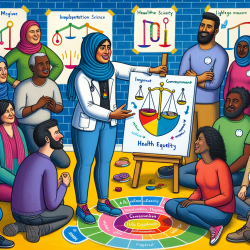The development of effective mental health interventions is crucial in addressing the treatment gap that persists in many communities. The recent research article titled How Can We Actually Change Help-Seeking Behaviour for Mental Health Problems among the General Public? Development of the ‘PLACES’ Model by Brown et al. (2022) provides valuable insights into improving help-seeking behavior through the 'PLACES' model. This blog aims to help practitioners enhance their skills by implementing the outcomes of this research or encouraging further exploration.
The 'PLACES' model stands for Publicity, Lay, Acceptable, Convenient, Effective, and Self-referral. It was developed to address the barriers to mental health treatment uptake, focusing on changing behavior rather than merely shifting attitudes. Here’s a closer look at each component and how it can be applied in practice:
- Publicity (P): Effective publicity strategies can increase awareness and normalize mental health issues. Using engaging and colorful materials to publicize workshops in community settings can attract attention and encourage participation.
- Lay (L): Using non-diagnostic, lay terms can reduce stigma and make interventions more accessible. For example, renaming 'depression workshops' to 'self-confidence workshops' led to a significant increase in participation.
- Acceptable (A): Ensuring the intervention is acceptable to the target audience is crucial. This involves using engaging formats, such as interactive workshops, and providing materials like workbooks to support participants.
- Convenient (C): Convenience in terms of location and timing can significantly impact participation. Offering sessions in community settings during weekends or evenings can reduce barriers related to time and location.
- Effective (E): Highlighting the perceived effectiveness of the intervention can motivate individuals to seek help. Emphasizing the benefits of the program in publicity materials can increase uptake.
- Self-referral (S): Allowing self-referral can make it easier for individuals, especially those from minority groups, to access services without needing a GP referral.
The 'PLACES' model has been tested with various groups, including adults with stress and depression, adolescents, and mothers with postnatal depression. The results have shown high rates of uptake and engagement, particularly among those who had not previously sought help and among racial and ethnic minority groups.
For practitioners, incorporating the 'PLACES' model into their practice can enhance the accessibility and effectiveness of mental health interventions. By focusing on these six factors, they can create a more supportive environment that encourages individuals to seek help and engage with treatment.
To read the original research paper, please follow this link: How Can We Actually Change Help-Seeking Behaviour for Mental Health Problems among the General Public? Development of the ‘PLACES’ Model.










